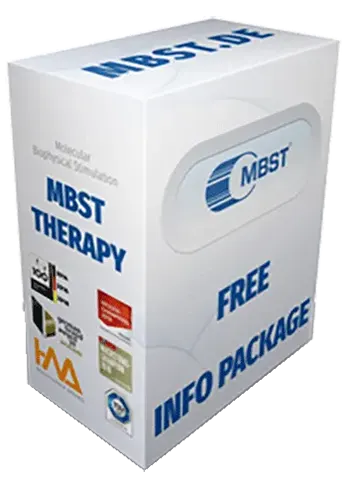
The regenerative approach of MBST therapy · Understanding and using the self-healing power of the body
Leland R. Kaiser coined the term regenerative medicine in 1992. According to his definition, it is the gentle renewal and replacement of tissue that no longer fulfils its function. This should be done by gentle adjustment and repair. Therefore, one of the most important goals of regenerative medicine is to use the body’s own powers to treat or even cure diseases. This developed into a new branch of research worldwide.
The aim of this innovative research is not only to improve medical care, but also the quality of people’s lives.
Current situation
With the current state of medicine, many diseases can be treated, but in many cases they cannot really be cured. This is particularly true for age-related conditions. As a consequence of better nutrition and developments in medicine, the general population is getting older and older. However, the human body is not always prepared for this and, depending on age and state of health, cells often die and functions of organs diminish.
The vision of regenerative medicine

Regenerative medicine aims to restore diseased tissue and its functionality, primarily by using the body’s self-healing powers.
In order to be able to enjoy the increasingly high age people reach, innovative solutions are needed, especially in the health sector. The enormous potential of the regenerative approach in medicine can already be seen in theory and in some research areas.
However, this is not so easy to implement, because it takes a long time for innovative treatment approaches to find their way into general medical care and high investments are necessary.
But more and more patients want to use innovative therapies. On the other hand, the health care system in Germany tries to cut costs – an attitude which complicates the introduction of innovative medicine. For example, it took 20 years before stem cell transplantation was accepted as a standard therapy for blood cancer patients. Only after another ten years, this form of treatment was accepted and paid for by health insurances.
MBST magnetic resonance therapy has to struggle with the same hurdles. So far there are over 200 studies, academic publications or lectures. We are continuously working on further research results and are implementing them into new MBST therapies for the benefit of our patients, despite the complex and cost-intensive approval procedures.
We are investing in new studies to further expand our evidence-based data base. More than 350,000 successfully treated patients in Germany alone show us that with the MBST magnetic resonance therapy we can help to alleviate pain even up to a pain-free life.
Patients tell us about a strong improvement in their quality of life which motivates us anew every day.
Make use of the body’s self-healing powers!

MBST magnetic resonance therapy also uses the research approach of regenerating instead of, for example, repairing surgically. The aim is to use the self-healing powers of the human body in order to treat injuries or diseases sustainably and gently and to enable patients to achieve a significantly higher quality of life – without costly and risky operations or other invasive interventions in the body. MBST magnetic resonance therapy also does not include any medication or painkillers that can have unpleasant or severe side effects.
Regenerative medicine
Regenerative medicine is the restoration of cells, tissues or organs whose functions are impaired. This is achieved by stimulating the body’s own regeneration and repair processes or by biological replacement in the form of living cells or tissues cultivated in the laboratory. The objective is to restore the healthy and functional original condition of an affected tissue instead of replacing and repairing it temporarily.
In the 19th century, when research showed that the cause of disease can often be found in the cells, scientists began to decipher the processes of regeneration. In recent decades, research and medical technology have developed rapidly changing regenerative medicine fundamentally. We know now that even specialised cells are not fixed building blocks of the body, but changeable structures whose behaviour can be influenced and reprogrammed. Focusing on the body’s ability to regenerate could help to solve many pressing problems in medical care. Not least for this reason, a promising future is predicted for regenerative medicine.
Evidence-based medicine
Evidence-based testing is based on the safety requirement for the clinical testing of new substances and was introduced in the 1960s, when study participants were harmed in research projects (keyword thalidomide). The stricter rules initially applied only to clinical trials but not in existing medical practice.
Sir Archibald Leman Cochrane pointed out in 1972 that diagnostic and therapeutic decisions require easily accessible information on randomised trial results and regular critical review of interventions made in all medical fields. Nowadays, there are guidelines and the degrees of recommendation for medical measures are graded according to a hierarchy based on the strength of evidence.
The medical community is increasingly critical of this, as the new regenerative approach also offers other possibilities. Today, it is already possible to classify individual patients on a molecular basis and adjust their medical treatment to their individual characteristics.
From evidence-based to personalised medicine
In diagnostics, medicine tries to take into account the particularities of a patient during treatment as well as age, gender, state of health and previous illnesses. Within the framework of personalised medicine, genetic, molecular and cellular characteristics are additionally identified and taken into account in diagnostics and therapy.
MBST therapy combines the approaches of regenerative with those of personalised medicine
That is an aim that MBST magnetic resonance therapy shares: innovative therapies and therapy devices that can be adjusted to the patient’s needs and have sustainable benefits.

